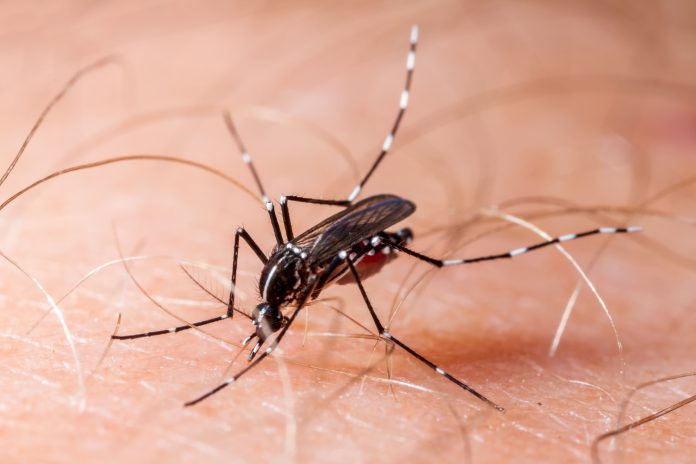Gaspary Mwanyika from the SACIDS Foundation for One Health, Sokoine University of Agriculture, Tanzania details the importance of genomic characterisation in the control of dengue
Dengue is the most important mosquito-borne viral disease of public health concern. Globally, the disease affects approximately 400 million people, leading to over 25,000 deaths each year. The overall prevalence of dengue infection in Africa is 14%, with serotypes 1 and 2 being the leading causes of outbreaks in the continent. The control of dengue is faced by several challenges. Lack of vaccine against dengue viruses complicates control of the disease, hence increasing risk of the virus transmission. The disease often presents with non-specific symptoms similar to other diseases like malaria, yellow fever, Zika, chikungunya and flu, hence there is a need of rapid laboratory confirmation for correct diagnosis. This underscores the need for enhanced differential diagnosis of febrile illnesses in the continent. Vector control and early detection remain the foremost strategies to prevent and control dengue.
Dengue in Tanzania
Before 2010, very little was known regarding dengue epidemiology in Tanzania and its impact was under-reported due to inadequate capacity for surveillance and diagnosis. Since then, annual dengue outbreaks have been reported in Dar es Salaam city which has become the epicentre of out-breaks in Tanzania.
Studies in Tanzania show that dengue infections are common in both rural and urban communities. Misdiagnosis of dengue and co-infections with other febrile illnesses such as malaria and chikungunya have also been reported in Tanzania.
Dengue virus exposure in diverse ecological zones of Tanzania
Population-based serological studies have reported the presence of dengue viruses in human population across Tanzania with the highest seroprevalence reported in the north eastern part of the country; with an overall prevalence of 16.1%. These findings suggest a wide circulation of the viruses and that a large proportion of exposed individuals are unlikely to be diagnosed through routine health care services due to the unavailability of reliable rapid diagnostic tools. Therefore, it is important that surveillance and diagnostic platforms for dengue viruses are strengthened in Tanzania in order to improve early diagnosis, patient management and outcomes.
Dynamics of dengue virus serotype circulation in Tanzania: A lesson for future outbreak response
Studies in Tanzania have indicated that 1, 2 and 3 serotypes of dengue are prevalent. Nevertheless, genomic characterisation of circulating serotypes is not often conducted. Using field deployable Oxford nanopore MinION sequencing technology, a recent study confirmed for the first time the active transmission of dengue serotypte 1 during the 2019 outbreak.
The analysis indicates that there was a possible introduction of dengue virus serotype 1 genotype V into Tanzania from a single source in Asia. These observations suggest that introduction new serotypes and/or genotypes into Tanzania may increase the risk of severe disease outbreaks in the future. This is because immunity to previous serotypes does not confer a long-term cross protection against subsequent infecting serotypes. These findings advocate the need of genomic characterisation and surveillance of the viruses recovered from human population in Tanzania.

Opportunities to improve point of care diagnosis of dengue
Studies indicate that rapid diagnostic assays show poor specificity due to inherent cross-reactivity that can lead to misdiagnosis of dengue infection. In a study in Tanzania, we characterised antigenic determinants on dengue virus envelope protein domain III using bioinformatics tools.
The domain III protein harbours serotype-specific antigenic determinants and induces strong neutralising antibodies that make it a suitable biomarker to develop new diagnostic tools. In our study in Tanzania, we have demonstrated that domain III proteins consist of conformational antigenic determinants that can be expressed in simple bacterial cells as potential targets to develop diagnostic nanobodies. The application of nanobody-based diagnostic tools can help to improve point of care diagnosis of dengue virus infection and minimise misdiagnosis with other infections.
The risk of dengue transmission and spread is inevitable in Tanzania
Dengue is prevalent in diverse ecological zones of Tanzania that can be partly attributed to tropical climate and human activities that favour the presence and abundance of mosquito vectors close to human habitats. The circulation of multiple dengue virus serotypes 1, 2 and 3 in Tanzania can lead to explosive outbreaks and increased risk of severe disease in the future.
Globalisation due to international connectivity through mass human travels from epidemic and endemic countries make the risk of dengue transmission and spread inevitable in Tanzania. Studies in Tanzania indicate the need to characterise dengue virus genomes in order to monitor the spread of new/ emerging genotypes and develop reliable point of care diagnostic tests that can provide rapid evidence of the disease outbreak to guide public health interventions.
Please note: This is a commercial profile
© 2019. This work is licensed under CC-BY-NC-ND.











